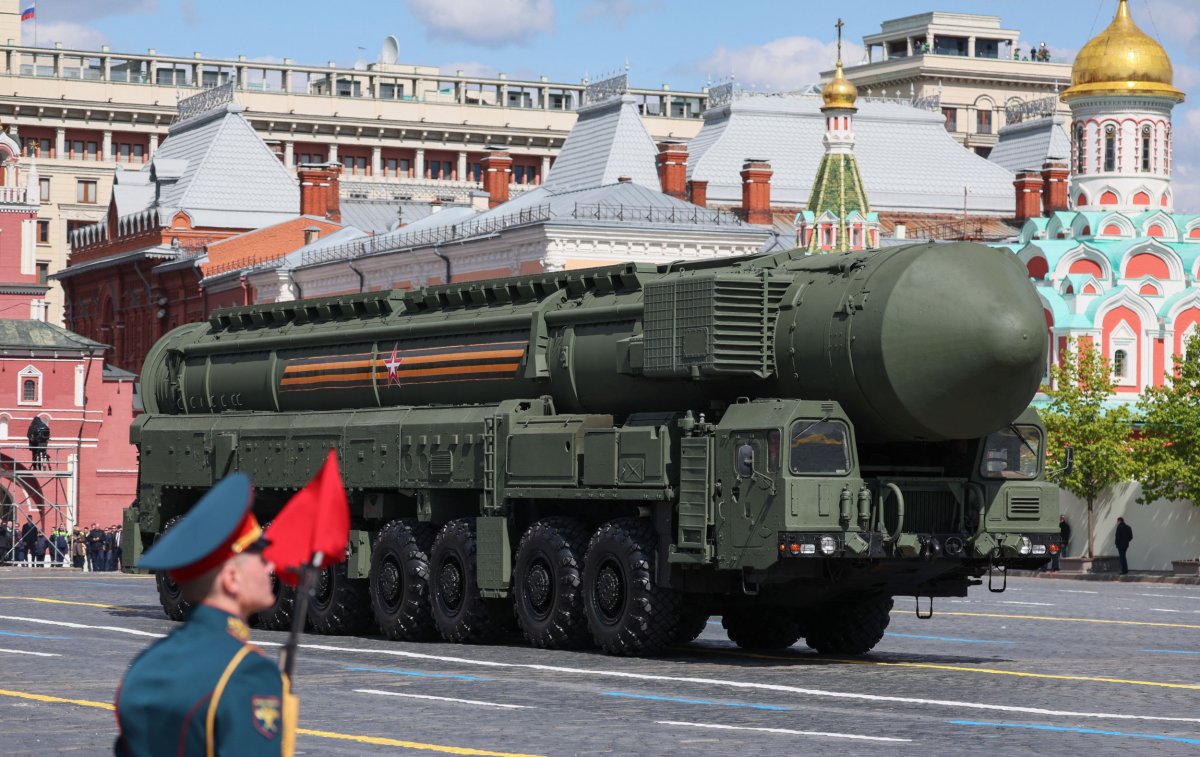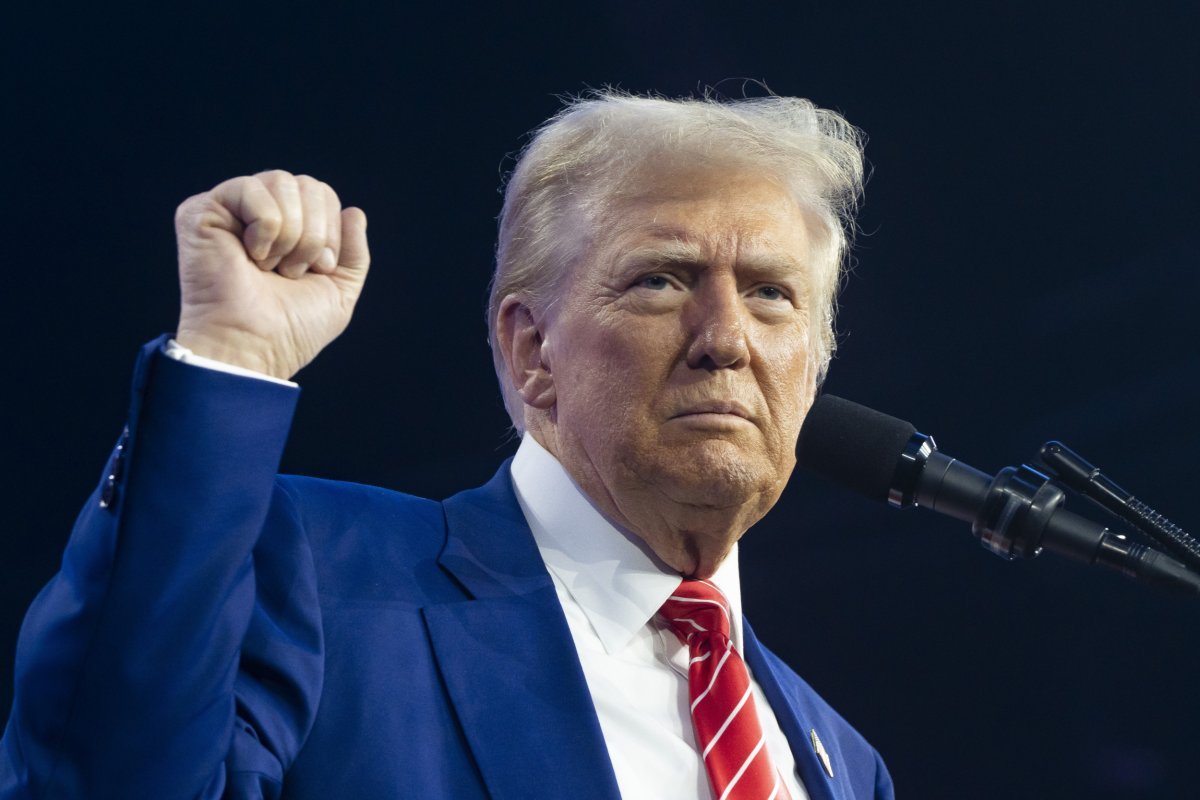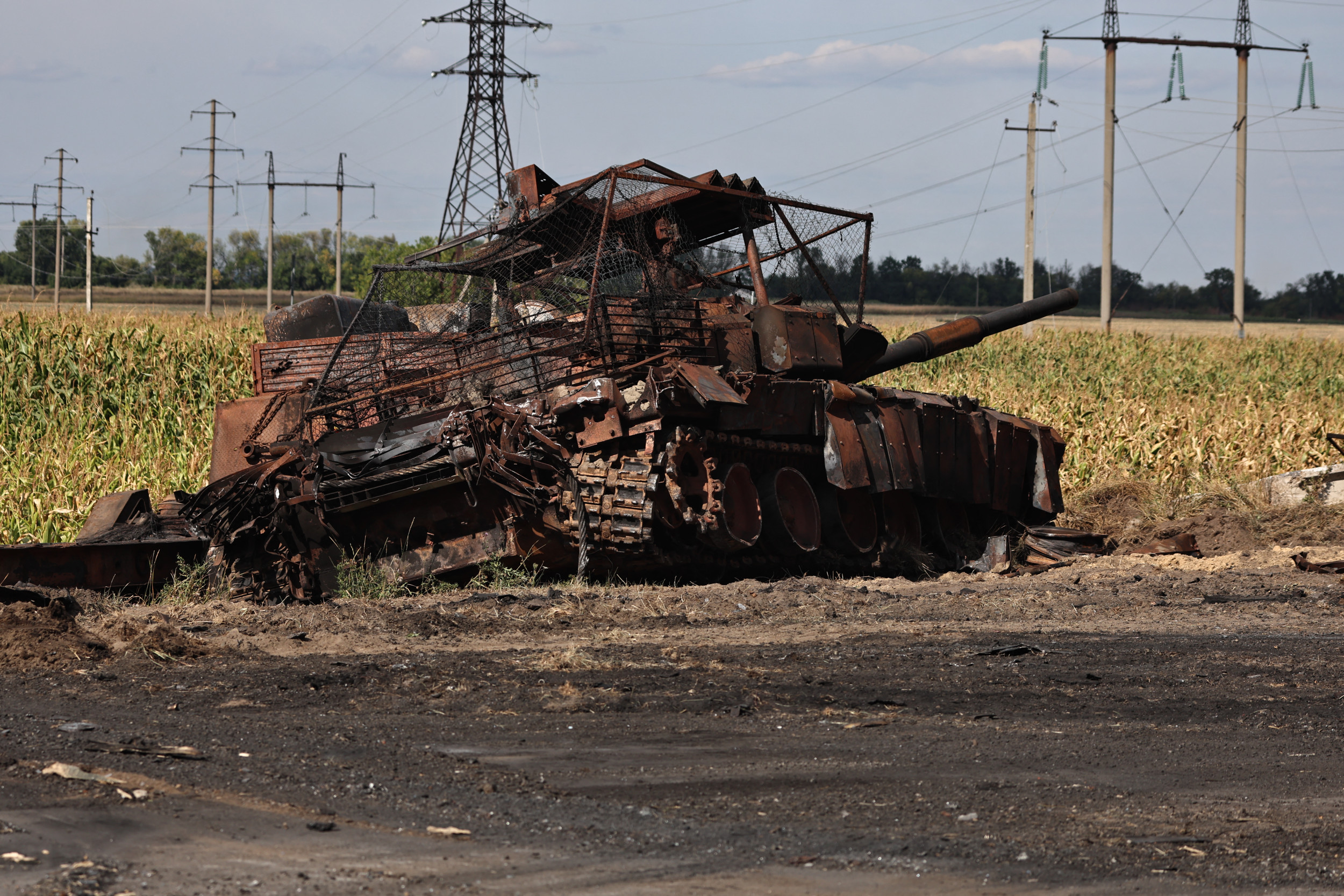The U.S. is not prepared enough for a possible long-range missile strike from Russia, China or North Korea, a new report seen by Newsweek says, offering one potential road map for President-elect Donald Trump to piece together the American version of Israel's vaunted Iron Dome system he has pledged to build around the U.S.
The report, penned by Robert Soofer, who served as former deputy assistant secretary of defense for nuclear and missile defense policy in the previous Trump administration, says the threat of long-range strikes, including those using intercontinental ballistic missiles (ICBMs) with nuclear warheads, hitting U.S. territory is "real and growing."
Soofer, writing for the Atlantic Council, recommends the incoming Trump administration quickly builds up U.S. stocks of specific types of interceptor missiles to knock out a possible incoming attack, rather than only rely on the threat of retaliation to make sure the likes of North Korea, China or Russia do not attack the mainland U.S.
Further down the line, the U.S. government should invest in space-based interceptors—a currently controversial topic—as well as directed-energy weapons now on the cusp of coming into use in various countries, Soofer says. Combined, an extra $4 or $5 billion should be plugged annually into the homeland missile defense chunk of the Missile Defense Agency's annual budget, Soofer argues, on top of the $3 billion currently earmarked.
"Combined, this would amount to about 1 percent of the defense budget for the number 1 national defense priority," the report says.

Washington can hit back at another country after they strike the U.S., the report argues, but it can only effectively block a first hit from North Korea and only if it uses a few warheads.
Trump has pledged to "build an Iron Dome" over the U.S. to ensure that "nothing can come and harm our people" but hasn't laid out precisely how he plans to achieve this.
Contacted for further comment, the Trump transition team told Newsweek to refer back to previous comments made by the President-elect.
The Republican will stride back into the Oval Office on January 20 with the world a more dangerous place than during his first term, with nuclear saber-rattling rife and experimental ballistic missiles bringing fresh attention to how Washington plans to protect U.S. soil.
North Korea has forged ahead with its nuclear and missile development programs—likely nudged on by Russia—and Moscow's war in Ukraine has brought relations between Russia and the U.S. to their worst point since the end of the Cold War.
Russian President Vladimir Putin said in November Russia had fired an experimental intermediate-range ballistic missile at Ukraine. Authorities in Kyiv had initially categorized the weapon as the first use of an intercontinental ballistic missile in combat. Moscow also updated its nuclear doctrine as Ukraine marked 1,000 days of war with its neighbor, lowering the threshold the Kremlin needed to justify a nuclear strike.
In late November, North Korea's defense ministry said "U.S. military provocations" risked "plunging the regional situation into an irretrievable catastrophe." Analysts expect Pyongyang to forge ahead with an increasingly sophisticated arsenal, while building up more stocks of conventional and nuclear warheads.
How Does the U.S. Currently Intercept Long-Range Missile Attacks?
As it stands, the U.S. does not have a joined-up system for intercepting large-scale ICBM strikes launched from Russia or China, although it would be able to take out the relatively small number of missiles that North Korea could fire at the U.S.
It would be an ad-hoc approach. The U.S. currently has 44 Ground-Based Interceptors (GBIs) deployed around the country—40 are in silos in Alaska, with another four at the Vandenberg Air Force Base in California as part of its Ground-Based Midcourse Defense system.
Around 2028, the Pentagon will add 20 Next Generation Interceptors, or NGIs, to the 44 GBIs.
Whatever is missed by these interceptors would likely fall to the U.S. Navy's Aegis system. Aegis can protect around a third of the U.S. at a given time, Soofer told Newsweek.
The Missile Defense Agency and U.S. Navy tested the SM-3 IIA missile against a mock incoming ICBM in November 2020. It fired SM-3 Block IIA missiles at the example ICBM.
General Glen VanHerck, the former chief of the U.S. Northern Command (NORTHCOM) and the U.S. and Canada's North American Aerospace Defense Command (NORAD) told lawmakers in March 2023 that he was "confident in our current capability to defend the homeland against a limited DPRK [Democratic People's Republic of Korea, or North Korea] ballistic missile threat," but was "concerned about future capacity and capability to respond." It is "crucial" for the U.S. to field the NGIs, he said at the time.
In the short term, the Trump administration should increase its stocks of SM-3 Block IIA missiles, the report argues. Washington should also beef up the number of GBIs available, Soofer says. In the longer-term, the U.S. should invest in space-based technology, including space-based interceptors, and look at directed-energy weapons like lasers, he adds.
The Pentagon and the North American Aerospace Defense Command, jointly led by the U.S. and Canada, declined to comment.
An American Iron Dome?
The Iron Dome, made by Israel's state-owned Rafael Advanced Defense Systems, was crafted to fend off short-range rocket attacks, which is not the main threat to the U.S. homeland. Experts dismiss an analogous design for the U.S. as impractical—Israel's defenses are vastly different to the U.S. for several reasons, not least the size of the country and who is doing the targeting.
In a Phoenix rally in late December, the President-elect said he will "direct our military to begin construction of the great Iron Dome missile defense shield, which will be made all in the USA, much of it right here in Arizona."

Representative Mike Waltz, a Republican from Florida whom Trump tapped as his pick for national security adviser, said earlier in the month that "we need an Iron Dome for America."
The proposals in his report, Soofer said, could be a practical way to make the Iron Dome concept fit for the U.S. If the American Iron Dome is a euphemism for more comprehensive defense, then the U.S. needs more layers, he said.
But homeland missile defense has always had its critics. Some analysts argue it is too expensive, technologically difficult to predict what an enemy's forces will look like decades down the line, and that it could undermine the idea of mutually assured destruction before triggering a new arms race.
The U.S.'s New Missile Threat Landscape
There are several scenarios the U.S. now needs to be prepared for, according to Soofer.
North Korea could launch a handful of missiles—deliberately or accidentally—and Russia or China combined, with their significant nuclear and conventional arsenals, could carry out an overwhelming attack on the U.S.
Experts say that a North Korean attack would be very different to how Russia or China would resolve to battle the U.S. Pyongyang, although bellicose, is restrained by its current stocks, but an attack from Beijing or Moscow—or both—would involve hundreds or thousands of ballistic and cruise missiles, as well as electromagnetic weapons and jamming, said William Alberque, a visiting fellow at the Henry L. Stimson Center and a former director of NATO's Arms Control, Disarmament and WMD Non-Proliferation Center.
"The scale would just be crazy," and beyond North Korea's capabilities for the moment, Alberque told Newsweek.
But Beijing and Moscow could also opt to attack the U.S. with a limited strike to "coerce" Washington, Soofer's report argues. This kind of operation would be designed to make the U.S. pull away from a fight or refuse to back an ally, but not provoke Washington into using its nuclear weapons or mount a large-scale, retaliatory attack.
The U.K.-based defense think tank, the Royal United Services Institute (RUSI), argued last year that the U.S.'s enemies could use limited nuclear or conventional strikes, which the U.S. is ill-prepared to fend off, "with the aim of frightening but not enraging Washington."
Putin and Chinese leader Xi Jinping "believe that such 'coercive' strikes could deter the U.S. from defending its allies," the think tank said.

A key part of the U.S.'s nuclear and broader military strategy relies on America's allies believing Washington will come to their aid, should they be attacked.
Beijing or Moscow could also hit the U.S.'s nuclear forces and command centers to stop overwhelming nuclear retaliation, according to Soofer's report. This means missiles should protect key bases and forces that the U.S. would use to strike back, it suggests.
The report says that missile defenses should not focus on "absolute protection for the American people," but making sure Russia or Chinese officials doubt that whichever type of attack they could mount will succeed.
What Could The U.S. Do Now?
The GBIs, single-handedly protecting the U.S. homeland, should be integrated with the SM-3 missiles, plus the interceptors fired by THAAD, and all the associated technology like radars, according to the report.
The U.S. also needs more of the SM-3 missiles, and to up production, Soofer says. The U.S. currently builds around 12 of the latest version of the SM-3s each year, but could probably make double this, Soofer says.
THAAD systems helped knock out Iran's ballistic missiles in its two waves of attacks on Israel in April and October this year. Each missile comes with a price tag of roughly $25 million—around a quarter of each GBI, a much more capable, long-range and advanced missile.
The U.S. is already developing the NGI, with defense giant Lockheed Martin chosen to carry through the development of the interceptor, touted by the manufacturer as a missile that "will revolutionize U.S. homeland missile defense." It is specifically designed to shield U.S. soil from intercontinental ballistic missiles from Iran and North Korea, Lockheed Martin said.
Developing a Long-Term Defense Strategy
The GBIs intercept an ICBM in the midcourse of its flight, when the incoming missiles are outside of the atmosphere, while the Aegis or THAAD missiles would strike as an ICBM is coming down.
But the earlier an ICBM can be knocked out, the better the defense against it.
At this point in its journey, the missile is moving slower, it is easier to detect because of its heat signature, and the warhead hasn't yet separated from the launch vehicle.
There are several ways to target an ICBM that will become a threat to U.S. soil before an SM-3 or GBI can get to it. Knocking out a missile in the earliest stage of its launch is known as boost phase missile defense and should be on the table, says Soofer.
One school of thought would be to have fighter jets hovering close to the launch site to intercept it, or drones and lasers in a similar position, but this could only really work against North Korea or Iran.
Another possibility is what South Korea has been quietly developing. In the past few years, Seoul has set out a strategy made up of several parts, including preemptive strikes on North Korea's nuclear and broader missile facilities if there are signs its northern neighbor is intending to use them, known as "kill chain."
South Korea then has its Korea Air and Missile Defense System to intercept attacks, paired with its Korea Massive Punishment and Retaliation (KMPR) plan. This is shorthand for precision strikes or using commandos to take out senior North Korean officials and vital command centers.
The air defense network, plus the KMPR, are Seoul's sword and shield, said Alberque.
Washington's policy should be to "stay ahead of the North Korean long-range missile threat through a strategy of layered missile defense combined with offensive measures to prevent launches before they occur," Soofer writes.
"South Korea is building a preemptive conventional capability to defeat a nuclear armed foe," Alberque said. "We should probably be working with South Korea on that."
"They're building an exquisite set of left of launch systems," Alberque said. Left of launch means taking action to stop an enemy attack before they can carry out their plans.
The Weaponization of Space
Another option is to launch interceptor missiles from space. It would be a key element for a U.S. Iron Dome, Soofer says, arguing that the weaponization of space is now inevitable.
The president-elect seems to think so, too. Trump said during the Arizona rally that "Ronald Reagan wanted to do it many, many years ago, but they didn't really have the technology."
"But they have it now, you can knock a needle out of the sky," he added.
Reagan, the Republican president who stewarded Washington through the 1980s while the Cold War drew to an end, pushed for what he termed the Strategic Defense Initiative (SDI), popularly dubbed "Star Wars."
Reagan intended for the SDI, partly based in space, to intercept intercontinental ballistic missiles launched by the then-Soviet Union at different points in the missile's flight.
The likes of SM-3 and GBIs would be enough to defeat a relatively limited North Korean ICBM stockpile, Soofer said. But against Russia or China, he said, space-based interceptors would be the only way to tackle the ICBM threat they pose.
Should Russia choose to launch attacks on the U.S., Washington could be up against more than 1,000 warheads heading for its soil and particularly its strategic nuclear forces. A hodgepodge approach to defending against this, and protecting the assets the U.S. would use to hit back, simply won't be enough, Soofer says.
Soofer suggests the Pentagon must place "more emphasis on investing in future, revolutionary capabilities, such as space sensors, SBIs [space-based interceptors], and non-kinetic options (such as directed energy) to outpace adversary capability development."
Support in detecting and identifying threats from sensors in satellites that are currently being developed could "substantially improve" how the U.S. could sift out real warheads from decoys in the next decade, Soofer says.
Others are skeptical. "Once you start putting systems in space, it never stops," Alberque said. "Then the Russians put systems in space, China puts systems in space, [then] China and Russia improve their ability to destroy your space-based assets, so you have to have better stuff to destroy their space."
It is possible to carve out a comprehensive defense against Russian or North Korean missiles as they exist today, said Alberque.
"But by the time you build it, North Korean missiles aren't going to be where they are today," he added. "They're going to be where they are in 10 years—or however long this takes to build—and at that point they're going to see that you're doing this, and they are therefore going to build systems designed to defeat what you're building."
"The problem is, you're still waiting for the disaster to happen," Alberque said. "It's such a Band-Aid approach."
What Are Russia and China Doing?
Russia and China are both building up their own defenses against long-range cruise and ballistic missiles, the report says. "Defense against U.S. ICBMs and cruise missiles could provide Russia and China an asymmetrical advantage, as an expansion of Russian and Chinese homeland air and missile defenses would likely impact the military balance in certain situations, complicating U.S. limited options," Soofer argues.
Moscow and Beijing are working together on early warning satellites, and using Russia's dominance in air defense blended with China's space expertise, said Alberque.
Russia's S-500 air defense system, the next iteration in its long-running line of advanced, ground-based air defense systems, is not just about intercepting high-flying aircraft but also about missiles and protecting space, Alberque said. Moscow is also developing the Nudol, or A-235 PL-19, a system designed to stop ballistic missiles and counter satellites, as well as new ways to dazzle enemy satellites in space.
China is "building massive new offensive capabilities in order to outrace the United States' limited missile defenses, and it's building other special capabilities to destroy U.S. missile defense capabilities so that we can't defend against anything," Alberque said.
"They're creating a system that will make it much harder for the U.S. to target and to reach Russian and Chinese targets," said Alberque. "They both got the message and they're building defenses," he added, but stressed that these defenses focus on shielding their military commanders, and nuclear hubs, rather than population centers and major cities.
"We're in the middle of an arms race," Alberque said. "Not at the start."








.png)








:quality(85):upscale()/2024/04/24/878/n/3019466/36c5693c662965c5d1ce91.72473705_.jpg)


 English (US) ·
English (US) ·